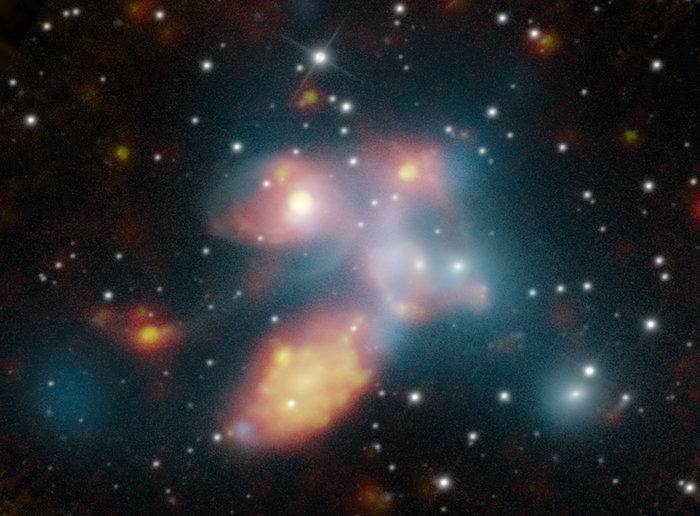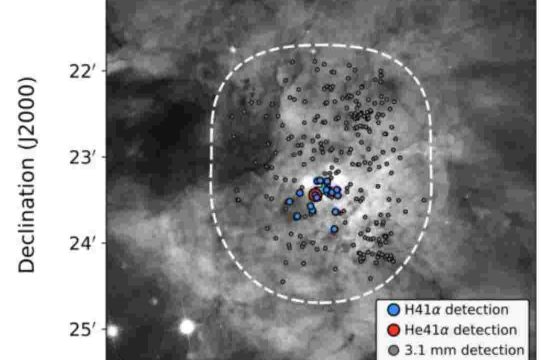
The Stephan’s Quintet of galaxies was discovered by astronomer Édouard Stephan in 1877. At the time, however, he reported the discovery of ‘new nebulae’, as the concept of other galaxies beyond our Milky Way was only formalised in the 1920s.
This image combines observations performed at three different wavelengths, with ESA’s Herschel and XMM-Newton space observatories as well as with ground-based telescopes, to reveal the different components of the five galaxies.
Stephan’s Quintet is one of the most spectacular galactic groups known, but only four galaxies from the originally discovered quintet are physically linked – the other was later discovered to be much closer to us. NGC 7320, the galaxy in the lower part the image, lies about 40 million light-years from us, rather than the 300 million light-years of the others.
[pullquote]By observing these galaxies in infrared light with Herschel – shown in red and yellow – astronomers can trace the glow of cosmic dust.[/pullquote]
One of them is the bright source above NGC 7320 in this view, two are the intertwined galaxies immediately to the right of image centre, and the fourth is the round patch towards the lower-right corner.
Later, it was discovered that an additional galaxy, hidden beyond the left edge of this image, sits at a similar distance to these four galaxies, reinstating the group as a quintet.
By observing these galaxies in infrared light with Herschel – shown in red and yellow – astronomers can trace the glow of cosmic dust. Dust is a minor but crucial ingredient of the interstellar matter in galaxies, which consists mainly of gas and provides the raw material for the birth of new generations of stars.
One galaxy stands out in the infrared light: the nearby NGC 7320, a spiral galaxy busy building new stars.
Shown in white, the optical light observed from ground-based telescopes reveals the shapes of the four distant galaxies, which exhibit tails and loops of stars and gas. These intricate features are an effect of their mutual gravitational attraction.
The intense dynamical activity of the distant group is also portrayed in the distribution of diffuse hot gas, which shines brightly in X-rays and was detected by XMM-Newton.
Represented in blue, the hot gas appears to sit mostly between the four colliding galaxies. It is likely a mixture of primordial gas predating the formation of the galaxies and intergalactic gas that has been stripped off the galaxies or expelled during their interactions.
A hint of a shockwave from the interaction of these four galaxies is visible as an almost vertical blue structure on the right of the image centre. This structure of hot gas also seems to trace a filament of infrared-bright dust that might have been heated by the shock.
At the top end of the shock, the infrared view reveals stars forming both within and outside the galaxies.
A faint tail of stars, gas and dust extends towards the left, leading to a dwarf galaxy glowing in infrared – the red and yellow object at the tip of the tail.
Further to the left, a dense concentration of hot gas is also visible in blue at the end of the tail, although it is unclear whether it belongs to the galactic group or is a foreground source.








